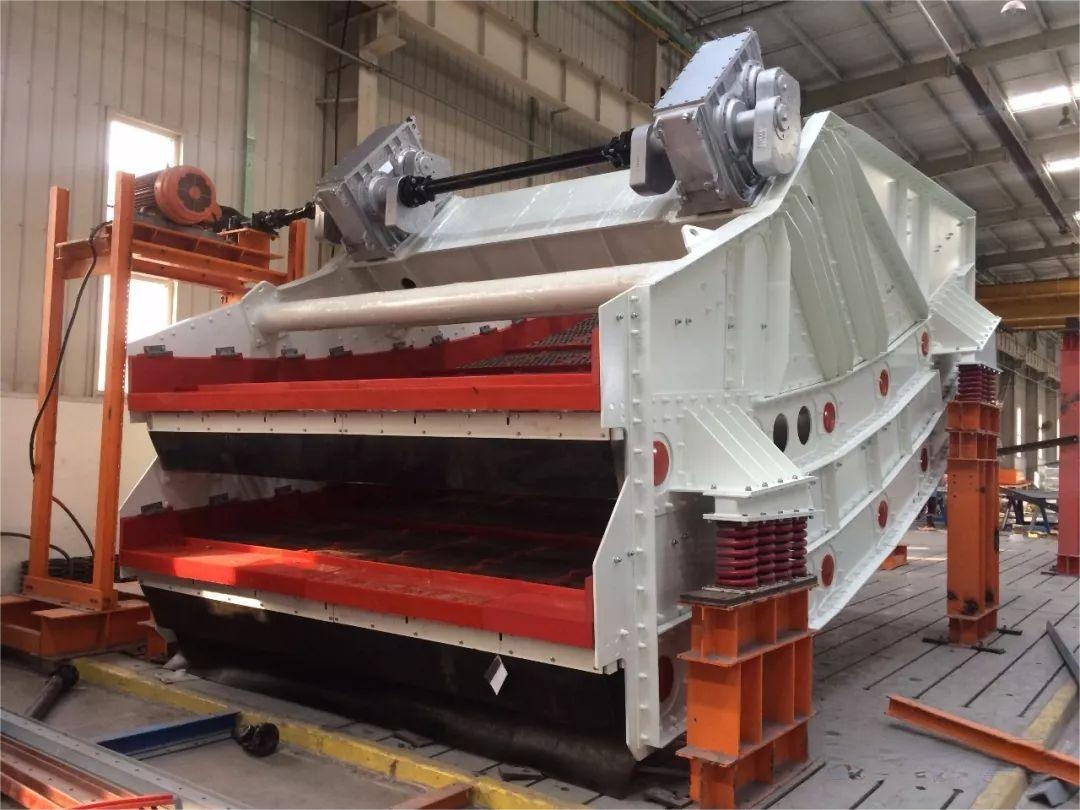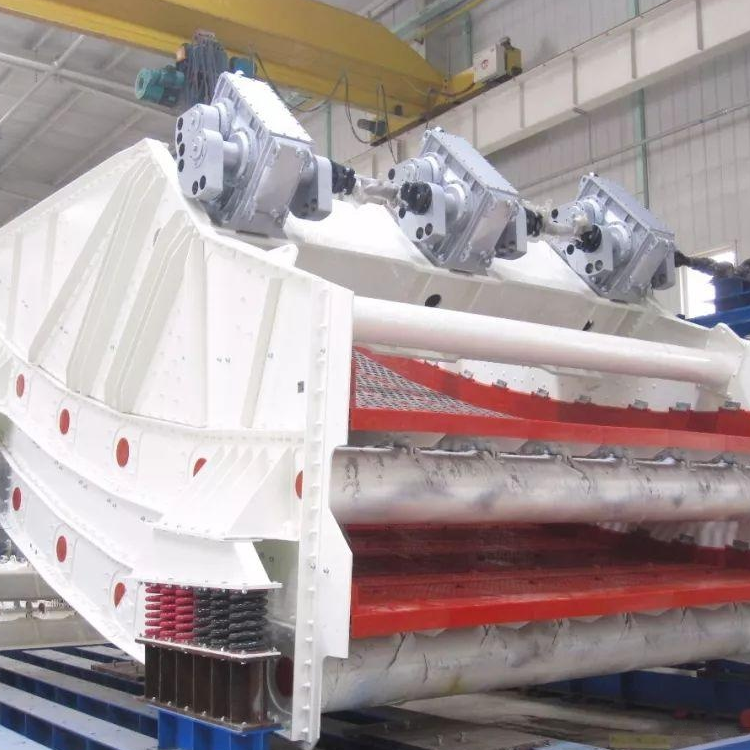Product introduction:
AURY vibrating screen applies the principle of equal thickness screening and linear vibration theory, adopts the world’s most advanced design concepts and advanced finite element force analysis and calculation methods, is equipped with advanced CNC processing equipment and technology, advanced testing equipment, and produces high-quality products. The quality and performance have reached the international leading level.
The design and manufacturing of AURY vibrating screens comply with Australian AS standards, GB/T5000: 3-1998 mechanical design standards, IEC international electrical standards, JB/T9022-1999 [Vibrating screen design specifications] and JB/T5496-2004 [Vibrating screen manufacturing general technology Conditions] and the requirements of relevant coal preparation machinery industry standards. The welding of steel structures strictly follows the Australian AS1554.5 [Advanced Fatigue Load Steel Structure Welding] rules.
AURY vibrating screen is mainly used for coal classification, desliming, dehydration and demediation, and is also suitable for screening and grading of other minerals.
AURY vibrating screen has the following technical characteristics and advantages:
● Simple and compact structure, high stiffness, high strength, balanced force distribution, and large safety factor;
● The vibration parameters are set reasonably to avoid the natural frequencies of the screen body at all levels and reduce the impact of resonance;
● Long life, the screen body has a service life of up to 10 years, and the vibrator has a service life of more than 60,000 hours;
● Light weight, low power consumption, high vibration intensity (9-12mm), and high screening efficiency (>95%);
● Using domestic brand patented screen surface configuration, it has high screening efficiency and large material handling capacity;
● Low working noise, the noise level is less than 75 decibels, and the operation is smooth;
● The working system of the whole machine is S1, ensuring stable and continuous operation for 24 hours;
● Use imported FFT professional frequency analyzer for frequency response and dynamic analysis;
● Complete varieties, able to fully meet the screening process requirements of different material characteristics and processing volumes;
● The screening machine is easy to operate and maintain, safe to use, cost-effective, has sufficient spare parts, and provides timely and thoughtful service.
Working principle of vibrating screen:
● The motor is powered and rotates, and the belt drive mechanism adjusts the speed;
●Transmit the driving force to the main drive shaft through the countershaft pair;
● Drive the vibrator to operate to generate linear vibration force, and the direction of the excitation force forms an angle of 45° with the horizontal;
● The linear vibration force acts continuously and reciprocally on the screen body, causing the screen body to vibrate on the buffer spring. At the same time, the buffer spring reduces the dynamic load of the screen body on the support foundation of the screen machine;
● The screen body drives the screen surface to vibrate synchronously and transmits force to the materials on the screen. The impact materials are thrown up on the screen surface, advance to stratification, and are graded through the screen according to the specified particle size;
● Materials are continuously buffered and input from the feed chute to the material receiving plate, and are screened through the screen surface. The materials under the screen are discharged into the under-screen chute, and the materials above the screen are discharged into the discharge chute;
The banana screen applies the principle of equal thickness screening to improve the processing capacity and screening efficiency of the screening machine.
Take the ABS3661 single-layer banana screen as a typical example. This screen type adopts a 5-angle and 5-section folded line screen surface. The inclination angles of the screen surface from the feed end to the discharge end are 25°, 20°, 15°, 10°, and 5° respectively. Decrease step by step. Under the action of the exciting force, the materials are continuously projected toward the discharge end on the screen surface to form a flow stream. The greater the inclination angle of the screen surface, the faster the flow rate. The feed end feeds a lot of material, but the inclination angle of the screen surface is large, which speeds up the movement of the material, and the material layer quickly becomes thinner and stratified quickly. The middle sections and the discharge end screen surface process the materials that have been partially screened in the previous section step by step. The materials gradually decrease and the inclination angle flow rate gradually decreases.
Since the thickness of the material layer on the screen surface is proportional to the feed amount and material flow rate, the thickness of the material layer is basically equal on each section of the screen surface from the feed end to the discharge end, so that the material layer thickness is appropriately and reasonably distributed on the screen surface to facilitate screening. This increases the chances of contact between the fine particles and the screen surface to facilitate screening.
Frequent Question
Do you have any question
What's your MOQ(minimum order quantity)?
1 set for the machine, and 10 pcs for the centrifuge basket, 100pcs for the screen panel.
What's your packing methods?
Packed in pallet or plastic film packed (customed is accepted).
What's your payment terms?
T/T 50% in advance by T/T,50% will be before shipment under FOB.
T/T 50% in advance by T/T,50% against the copy of BL under CIF.
T/T 50% in advance by T/T, 50% LC at sight under CIF.
What's your delivery time?
60-90 days after receiving the advance payment.
Can we visit your factory?
Warmly welcome. Once we have your schedule, we will arrange the professional sales team to follow up your case.
Are you manufacturer or trader?
We are a manufacturer of vibrating screens and related spare parts for decades years, TSX Screen does domestic market and export business.
No Matter You Are Looking For A Reliable Mining Vibrating Screen Or Related Spare Parts Manufacturer, Pretty Sure That TSX Will Be Your First Choice, Send Inquiry For Your Next Project Now.
TSX Vibrating Screen
TSX Screen Media
Contact
- +8616600250766
- jane@tsxscreen.com
- Room 1501, Block A, North Tower, Wisdom Mountain, No. 1 Gonghua Road, Huayuan Industrial Park, Xiqing District, Tianjin, China.



